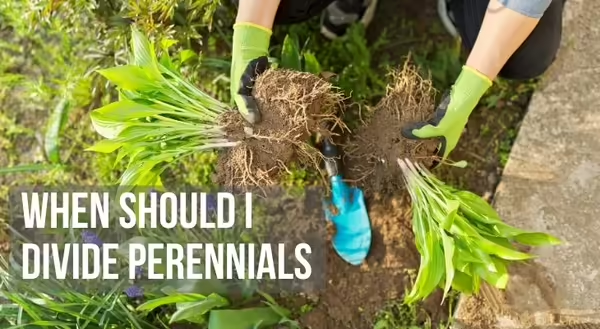
With our recent warm weather, you have probably started noticing your landscape plants really taking off in growth. For those with a more established landscape, this boost in growth may have you noticing some of your perennials crowding out others or taking over. If this is the case, it may be time to consider splitting your plants.
Why Should We Divide Perennials?
Dividing perennials helps to control a plant’s size. Plants can become too large where they will compete with or shade other plants in your landscape. It also helps rejuvenate plant growth which stimulates new growth and blooming. We can also use plant division as an inexpensive way to increase the number of plants. I always enjoy sharing divided plants with friends!
When Should We Divide Plants?
The most common recommendation for splitting perennials is in the fall for spring and summer blooming plants and in the spring for fall blooming. It is always best to divide the plant when it is not flowering so it can focus its energy on regenerating root and leaf tissue growth. When dividing in the fall, it is best to do so four to six weeks before the ground freezes for the roots to become established. A positive to dividing fall blooming perennials in the spring is it allows you to see what you are doing. When splitting plants, them have energy stored in the roots which will help the plants recover.
Most perennials should be divided every three to five years. Some such as lily of the valley is best divided annually to keep it from taking over a flower bed; while other plants such as hellebores, bleeding hearts, or peonies rarely need dividing unless you want to increase your plant number.
How to Divide Plants
Division of plants is best done on a cloudy day rather than a hot sunny day which can cause the plants to dry out. If it has been dry prior to splitting plants, water them to prepare them for dividing; you should also water plants for a few days after. When it is time to divide the plant, dig up the parent plant with a spade or fork. Pull the plant out of the hole and remove any excess soil. You can either try pulling or teasing roots apart to create a new plant, or you can slice through the plant and root ball with a sharp knife or spade to split plants. Depending on the plant, you will find one method works better than the other. You will want to ensure that each new division you create has shoots and roots. If you accidentally cut some shoots from roots, you can still plant the roots in hopes of a new plant. If you decide to share your divided plants with others, keep the plants shaded and moist until they can be replanted. Some plants are more resilient to being split and replanted. With plants that haven’t been split in a while, we can divide them into multiple, smaller new plants. Be sure to remove any dead or diseased portions of the plants to make sure new plants are healthy.
Good Growing Tip: University of Minnesota has compiled a spreadsheet of 125 perennials with helpful information on how and when to divide.
Want to get notified when new Good Growing posts are available? SIGN ME UP!